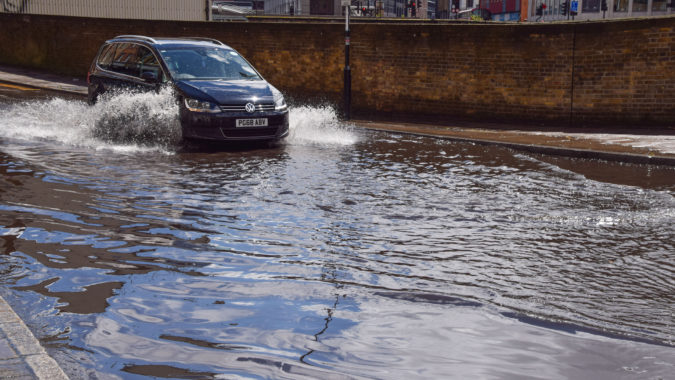The Commission has recently been running workshops with Ipsos Mori to gauge the public’s understanding of the UK’s infrastructure priorities. While trains, roads and broadband are readily raised around the tables up and down the country, flooding is sometimes conspicuously absent from the conversation.
It’s understandable. Flooding is infrequent and unless you live in a flood plain or have recently been flooded, it’s not front of mind. It is for the Commission. The UK’s flood preparedness and resilience is an essential component of our forthcoming National Infrastructure Assessment because of its impact on communities.
That’s why I was in Northampton recently with our Commissioner Kate Barker to look at how the city has recovered from the devastating floods of Easter 1998 and see what impact new infrastructure can have in preventing future floods.
The Easter 1998 floods along the River Nene were caused by a month’s worth of rain falling in one day. The river and existing flood defences couldn’t absorb the flow and the river over-topped along its course. Two people died and at least £75m of damage was caused. Vital road and rail links were blocked and many families and businesses were uprooted for months.
Since then the Environment Agency and local councils in the region have put in place a range of solutions that should limit future risks and offer wider benefits. For example, we saw in Upton a passive attenuation scheme that offered clear environmental benefits and opened up new land for much-needed homes (Northampton is a part of the Cambridge – Milton Keynes – Oxford Growth Arc). But even with improved defences, residents must still be prepared for the possibility of flooding.
The UK needs better flood preparedness and resilience. About 800,000 properties have a 1% or greater annual likelihood of flooding from rivers and the sea; slightly more face a similar level of risk from surface water floods. Incidents like the Dawlish coastal floods, which severed the rail link to Devon and Cornwall, show the long-term impact flooding can have and with global warming, the UK’s flood risk by 2080 is expected to increase by 50%.
The country needs better joined-up planning for flooding (drainage and sewerage) to stay ahead of risks we can foresee. One area where we need to do more is managing the risks from surface water flooding, which is why Northampton offered a number of useful lessons to learn.
As our weather patterns change, and the likelihood of deluges increase, authorities need to be more aware of this risk. Effective local planning and co-ordination between councils, water companies, developers and planners – as I saw on our visit to the Nene – is essential to ensure that as a country we ‘build in’ flood prevention and resilience to all aspects of local place-shaping.
Where we do build new infrastructure, this can be done in such a way that it reduces risks and contributes to the environment. For example, the Washlands storage reservoir outside Northampton provides flood protection but is also a site of special scientific interest and home to a substantial Golden Plover population.
Building resilience means doing more than simply running to stand still. Planning for water resources and flood risk is already well established, but discrete plans have been prepared for different types of water infrastructure and the approaches taken can sometimes be inconsistent. In future, better co-ordination can mean more effective planning and delivery to reduce flood risk.
Co-ordinated action, to prepare effectively for future risks, will be a guiding principle as we prepare our recommendations on flood management for the National Infrastructure Assessment.




